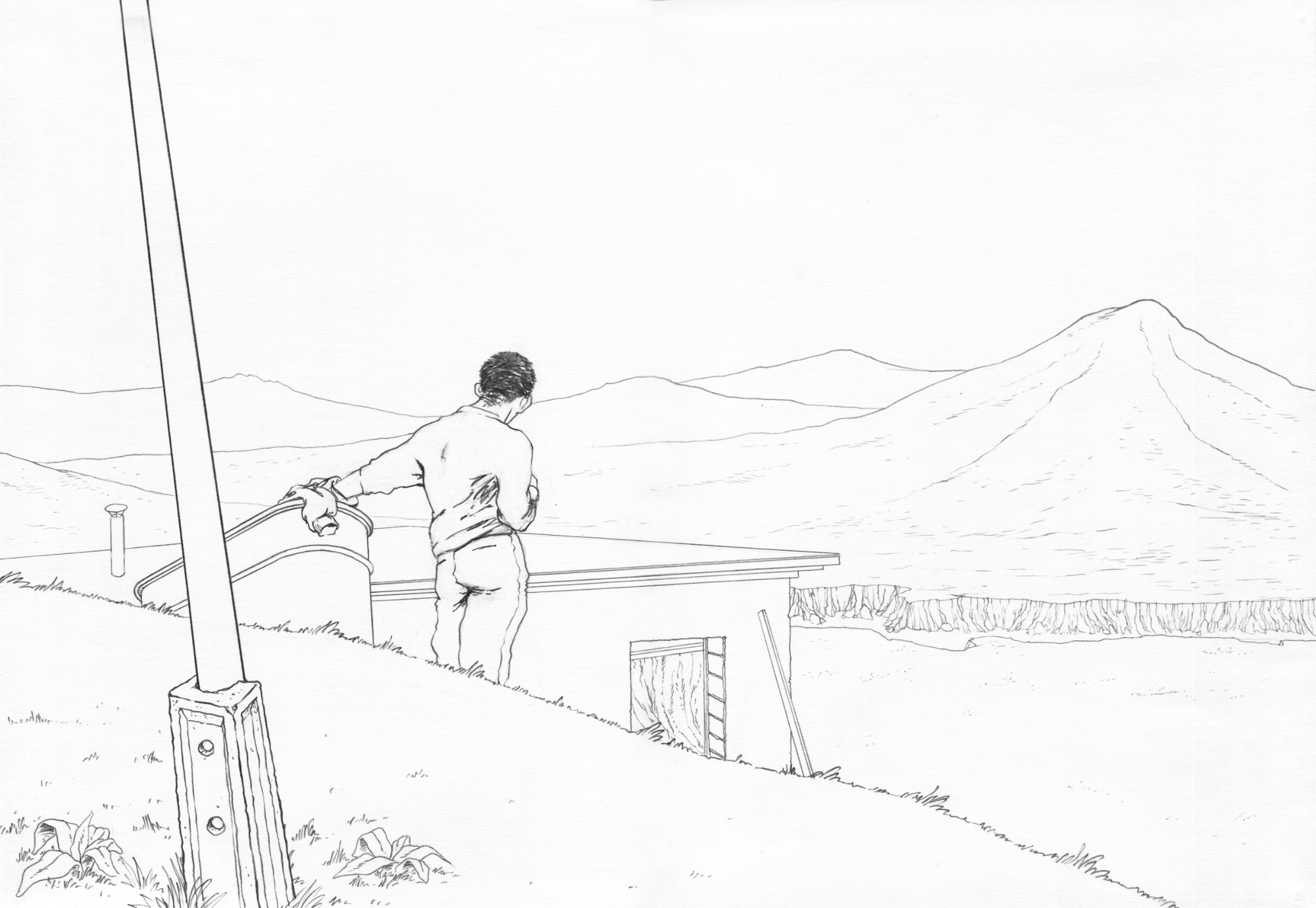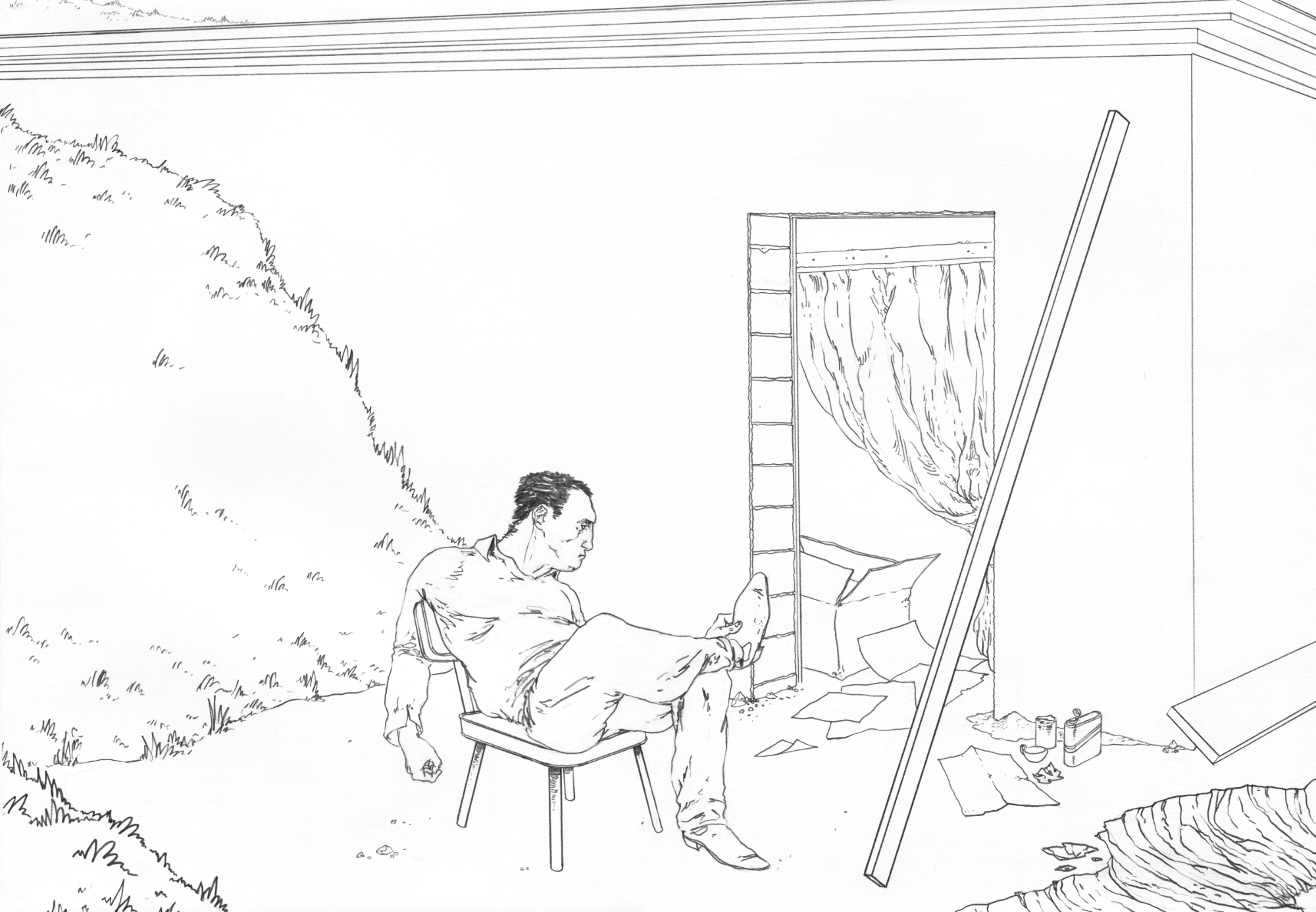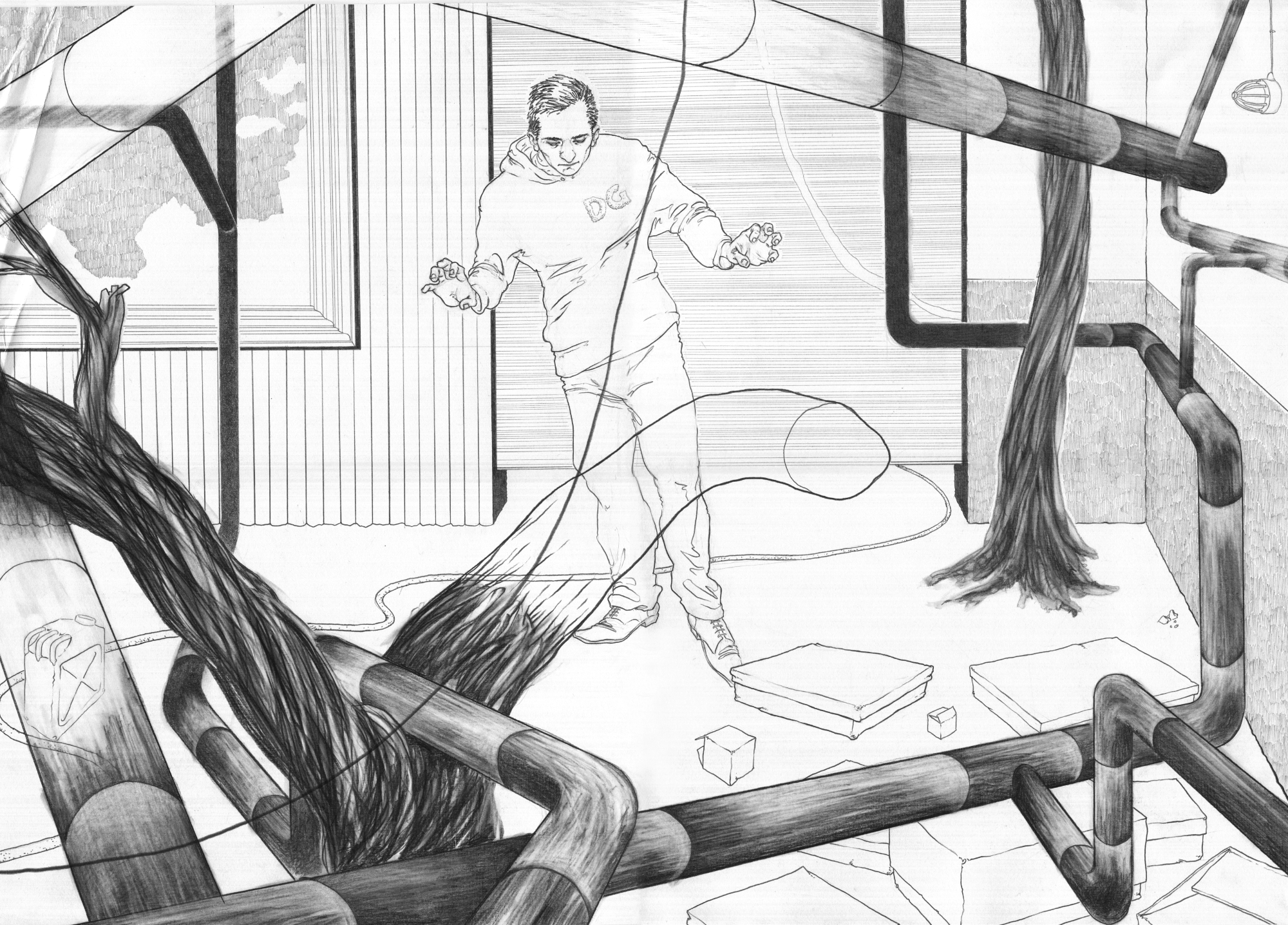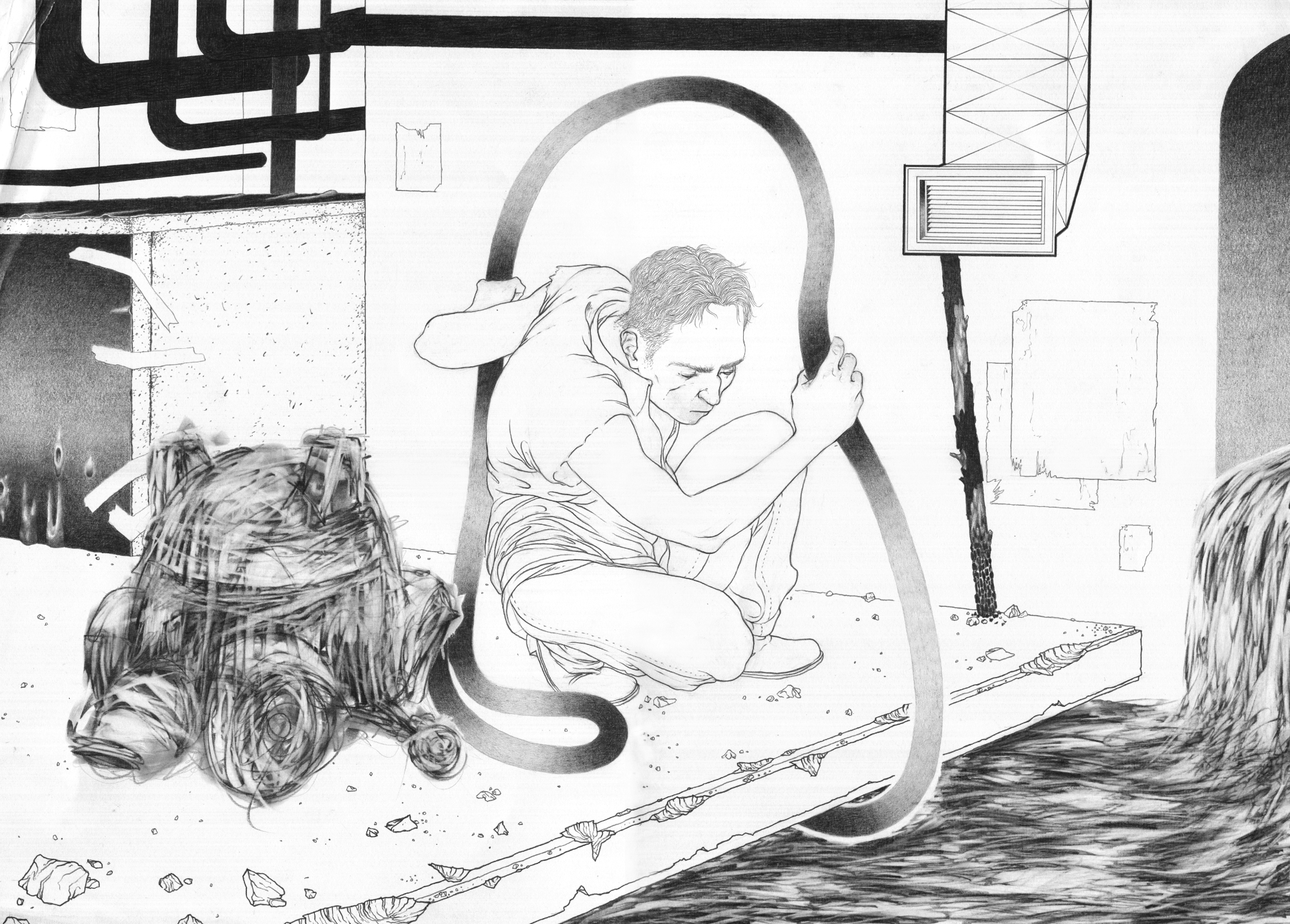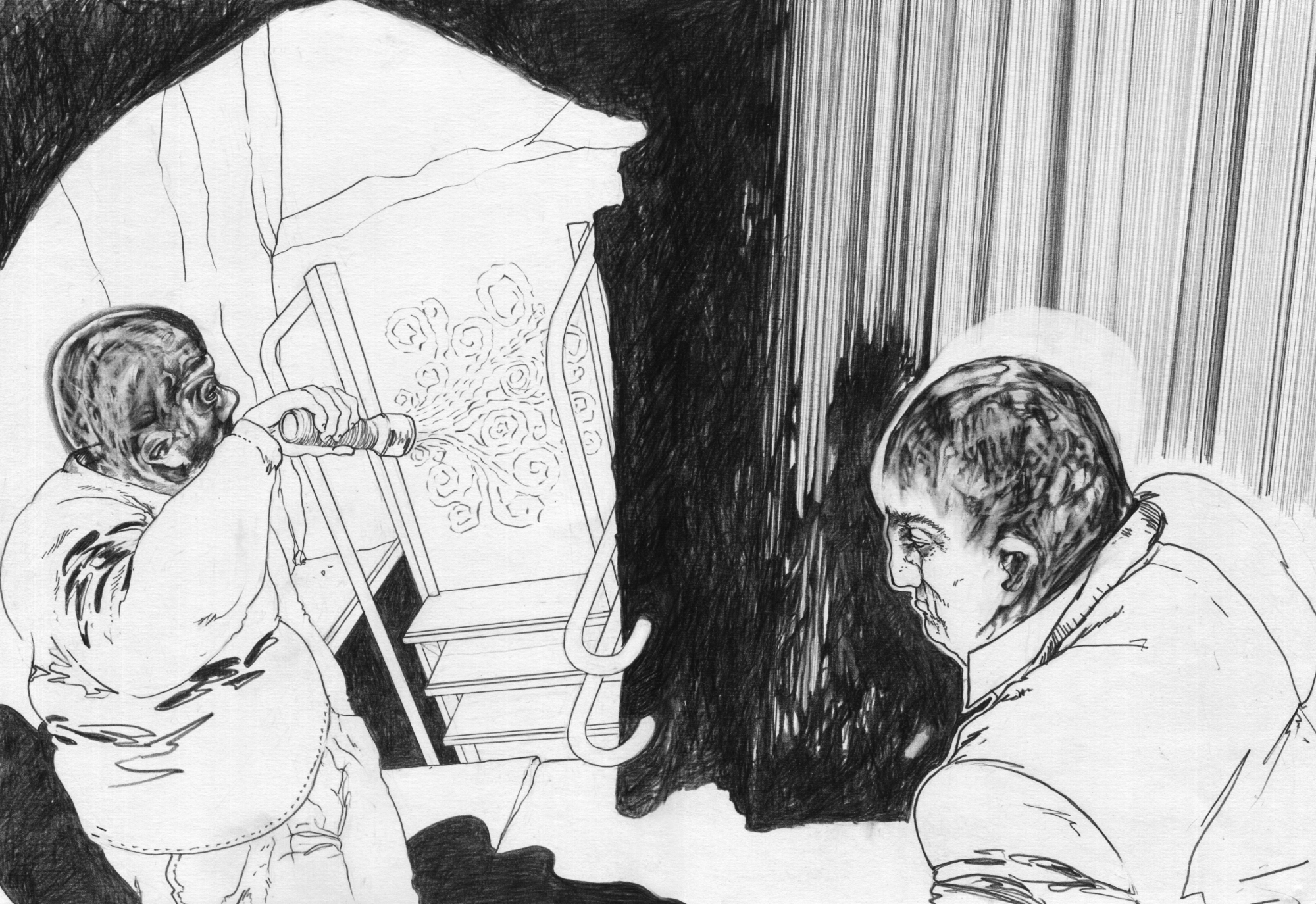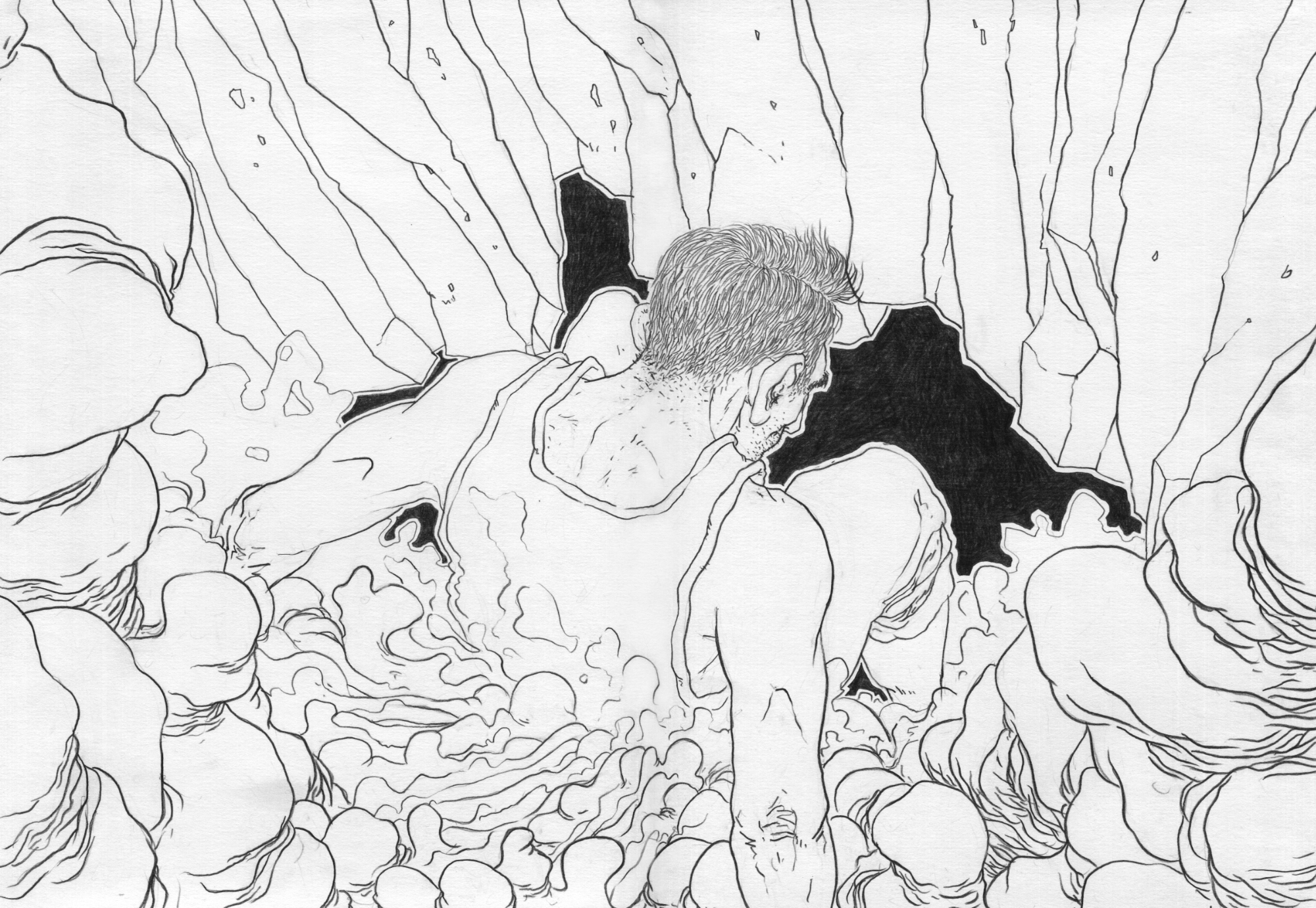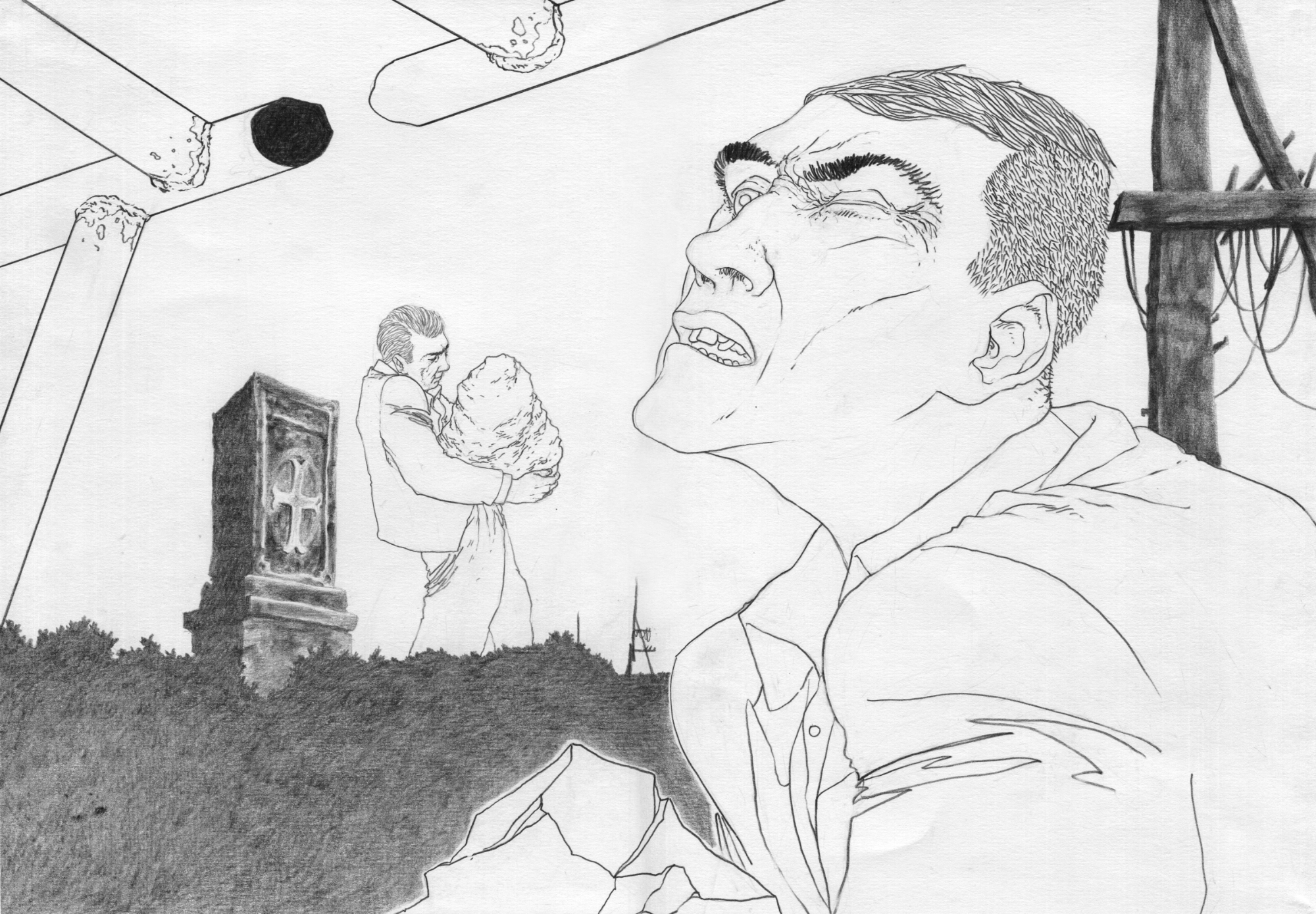on the trail of Heinrich Theodor Wehle in the Caucasus
pencil on paper / between 31 x 23 and 59 x 41 cm
Heinrich Theodor Wehle (1778 - 1805) war in
der Region Sachsen und Sachsen-Anhalt als
Landschaftsmaler, Zeichner und Radierer tätig. 1802
reiste er mit einer Expedition des Zaren durch den
Kaukasus.
2006 schrieb die Kunststiftung des Landes Sachsen-
Anhalt zusammen mit der Stiftung für das sorbische
Volk ein zweimonatiges Reisestipendium für zwei
Künstler:innen in Armenien aus.
Ein ortskundiger Dolmetscher und Reiseführer
brachte uns an genau die Orte, an denen Wehle 200
Jahre zuvor seine Zeichnungen von Karawansereien,
Wasserfällen und Schluchten anfertigte. Wehles Idyllen
waren meist leicht wiederzuerkennen, auch wenn die
Zeit und mit ihr der gesellschaftliche Fortschritt da und
dort eine Leuchtreklame, eine Seilbahn für Arbeiter
oder schlichtweg Teerstraßen hinzugefügt hatten.
In Armenien muß man nur irgendwo seinen Finger
in die Erde bohren und schon findet man eine
Tonscherbe, eine Speerspitze oder einen Haufen
Bärenkot, während einem der Geruch von Grillfleisch
in die Nase weht und weiter oben an der Landstraße
eine Gastanktstelle explodiert. Dann fährt ein Truck aus
dem Iran an einem vorbei oder ein Maschrut-Taxi aus
Tblissi und man wird von einem goldzähnigen Dörfler
zu einem Maulbeerschnaps eingeladen während
einem erklärt wird, daß in Armenien nicht nur das
Rad erfunden wurde sondern auch das Fladenbrot,
die Schrift und überhaupt alles was die Menschheit
ausmacht. Und daß ihre Kirchen und Kreuzsteine die
schönsten seien. Und zusammengehalten wird alles
durch die Familie.
english:
Heinrich Theodor Wehle (1778 - 1805) was a Landscape painter, draftsman and etcher in the region of Saxony and Saxony-Anhalt.
He traveled through the Caucasus with an expedition of the tsar.
In 2006 the Art Foundation of the State of Saxony-
Anhalt together with the Foundation for Sorbian
Peoples offered a two-month travel grant for two
Artists in Armenia.
A local interpreter and guide took us to exactly the places where Wehle did his drawings of caravanserais, waterfalls and gulches 200 years earlier. Wehles idylls were mostly easy to recognize, even if time and social progress added a neon sign, a cable car for workers or just tar roads her and there.
In Armenia you just have to put your finger somewhere
into the earth and you will find pottery, a spearhead or a heap of
bear droppings, while one catches the whiff of grilled meat and further up the country road a gas station explodes.Then a truck from Iran passes by or a Mazhrut Taxi from
Tblissi boogies down the dirt road and a gold-toothed villager
invites you to a mulberry schnapps while
one is told that not only the wheel was invented in Armenia but also the flatbread,
the scriptures and everything ekse that shapes mankind.And that their churches and cross stones
are the most beautiful. And everything is held together
through family ties.
